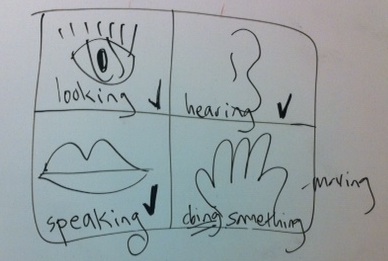Many educators — myself included! — have espoused learning styles as an important factor in increasing student motivation and performance. When I was a classroom teacher, I had students take learning inventories, and then I would use the results of this inventory to help individualize student learning. As an academic coach, I used to have students take the same inventories and then use the results to help the students maximize their learning.
In the last few years of coaching, however, I’ve stopped giving these inventories. I DO still believe that every person learns differently, and that it is important for students to understand — and advocate for! — learning methods that reveal their strengths.
However, I’ve noticed that too much of an emphasis on learning styles makes students less inclined to learn in ways that are *not* their learning preferences. I’ve observed that most students need both:
- permission to study in ways that are more interesting/pleasurable to them (this includes learning styles), AND
- an understanding of the importance of studying in multiple ways, regardless of the student’s dominant learning style.
During our academic coaching sessions, I point out when I see a student exhibiting certain learning strengths or preferences, and I ask students to reflect about what kinds of activities help them learn best. But when we discuss test preparation, I consistently give my students what I fondly refer to as the “study senses” lecture. It goes something like this:
 I ask them to draw a box on the board, divide it into four quadrants, and then draw a specific picture in each box.
I ask them to draw a box on the board, divide it into four quadrants, and then draw a specific picture in each box.
I then tell clients that each picture represents an important method of studying. If they only study in one method, the information is not going to stick as well as it would if they used multiple “senses.”
We discuss each picture, and I have the student figure out what the “study sense” is. As you can see in this picture, they include:
- looking (taking in information visually)
- hearing (taking in information aurally)
- speaking (repeating information, usually in your own words)
- doing something active (making flashcards, taking notes, acting out, playing basketball while being quizzed, etc)
Finally, I have the student check off the box that reflects their most habitual form of studying. Most students check off “looking” (because they flip through their textbook as their primary study method), but few others. We end our session making a list of ways they can study actively for each of their upcoming tests, using as many of the “study senses” as possible.
Here is an example of a similar brainstorm (documented in a google spreadsheet because I was working virtually with the student):
One of the reasons I love the “study senses” is that this model gives students specific language to write down in their planner. For example, instead of writing “study for science test” (a pet peeve of mine! so non-specific), I ask them to write the specific action they will take to study. “Review science notes and make Cornell study sheet” or ” have friend quiz me using study guide” are much more actionable than “study for test.”
Furthermore, this model gives students a concrete way to assess their own studying. I’ve had clients tell me, “Well, I didn’t do as well on that test because I only studied with one of those senses.”
So, to all the tutors, teachers, and academic coaches out there, I’m curious: how do you teach students to study actively using a variety of modalities? Do you still find learning styles useful, or have you discovered other techniques?
To parents and caregivers, I’ve discovered that 5-6 sessions of academic coaching with an emphasis on study skills can transform a willing student’s performance on tests. If your student is struggling with tests, I’ll happily provide a free 15-minute consultation via phone or skype, and I work virtually, which means I’m available to anyone, anywhere. Contact me for more info.


Really helpful, Gretchen. I may forward this to the student I am tutoring in Kabul. We are currently reading The Kite Runner together over Skype — she reads a chapter, and then I read a chapter — and she is studying for her final high school exams as well.
Cool, Jo. What a fun tutoring job…reading and discussing good books with a student over skype. It must be fascinating to hear her responses to the book, since she’s so much more “local” than you are. If you share it with her, and if she finds anything I’ve said helpful, encourage her to comment. I’d love to hear!!